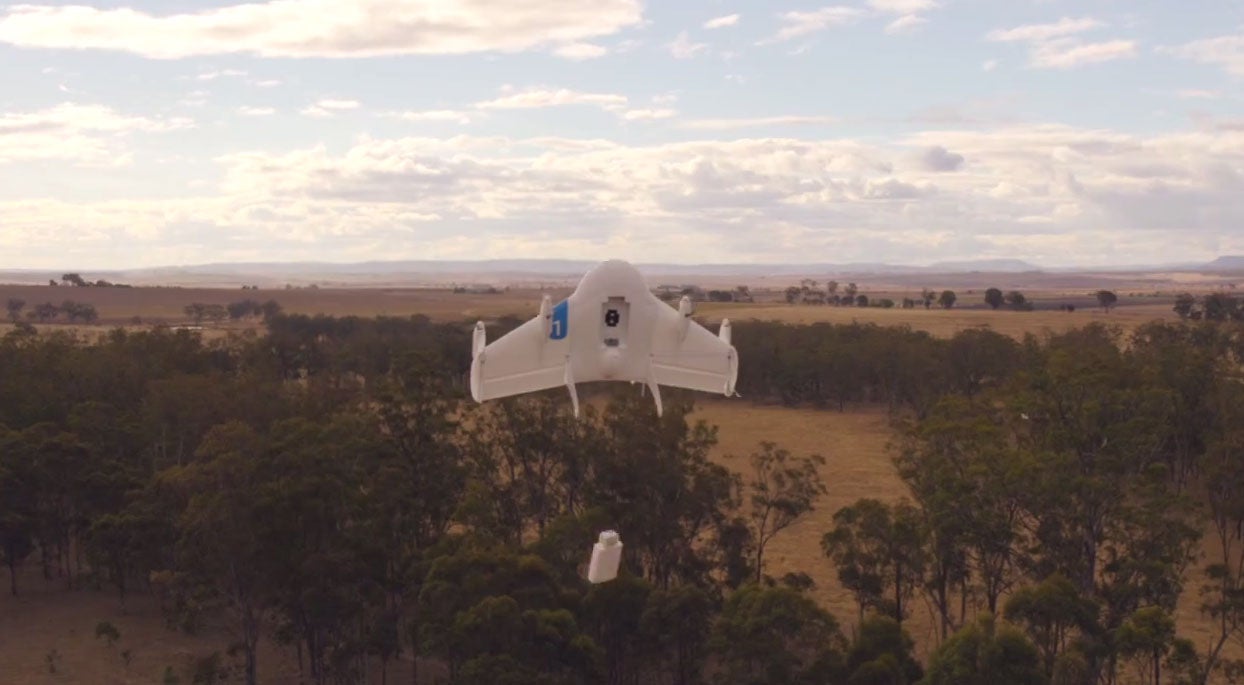Google unveils secret delivery drone program dubbed 'Project Wing'
The drones have been tested in the Australian outback, and Google hopes they could be useful in disaster relief situations, delivering food and medicine

Your support helps us to tell the story
This election is still a dead heat, according to most polls. In a fight with such wafer-thin margins, we need reporters on the ground talking to the people Trump and Harris are courting. Your support allows us to keep sending journalists to the story.
The Independent is trusted by 27 million Americans from across the entire political spectrum every month. Unlike many other quality news outlets, we choose not to lock you out of our reporting and analysis with paywalls. But quality journalism must still be paid for.
Help us keep bring these critical stories to light. Your support makes all the difference.
Bored with simply serving up search results, Google has started testing a prototype drone delivery system that can shuttle goods to remote areas.
The project is being developed at Google X, the company’s secretive research and development arm, and has already drawn comparisons with Amazon’s experimental drone delivery system announced last year.
The drones themselves though are a different breed to Amazon’s quadcopters. They’re fixed wing aircraft – Google calls them “self-flying vehicles” - with a wingspan of around five feet and a weight capacity of just 1.3kg (so they could only just deliver a mobile phone plus packaging).
"It's years from a product, but it's the first prototype we want to stand behind," says Nicholas Roy, founder of Project Wing.
The drones can take off vertically like helicopters and fly like fixed-wing airplanes, with four propellers capable of moving into different formations. Packages are held in the belly of the craft and dropped on the end of a line; slowing the delivery and detecting when it’s hit the ground.
The drones have been tested delivering packages to remote farms in Queensland, Australia. The tests themselves wuld be illegal to carry out in the US, but Google describes Australia’s stance to commercial drone programs as “progressive”. (Amazon's own drone experiments have been grounded by the FAA until at least 2015).
The vehicles have pre-programmed destinations but fly themselves there and back without human intervention. Although Project Wing could be used to deliver consumer products, Google sees the drones as being primarily useful in disaster situations.
"Even just a few of these, being able to shuttle nearly continuously could service a very large number of people in an emergency situation," Astro Teller, Google’s lead on Moonshots, told the BBC.
Google's vision for the future is of a system overseen by human controllers but with the planning and flying carried out mostly autonomously (as with the company's self-driving car program).
The program's original intent was to deliver defibrillators to people having heart attacks, but this was apparently shelved after the company realised it would have to be integrated into emergency services.
“FedEx overnight delivery has absolutely changed the world again. We’re starting to see same-day service actually change the world,” Teller told The Atlantic. “Why would we think that the next 10x—being able to get something in just a minute or two—wouldn’t change the world?”
Video Courtesy of Google
Join our commenting forum
Join thought-provoking conversations, follow other Independent readers and see their replies
Comments